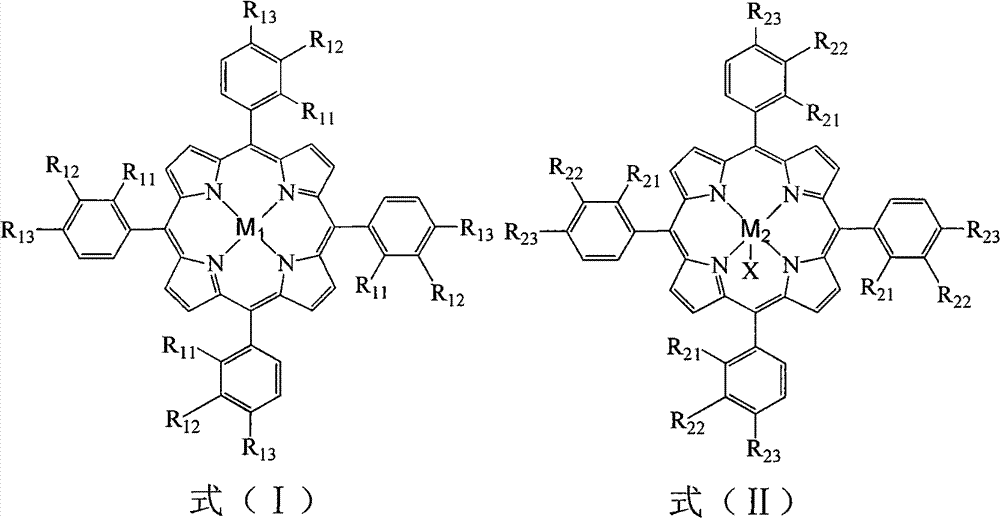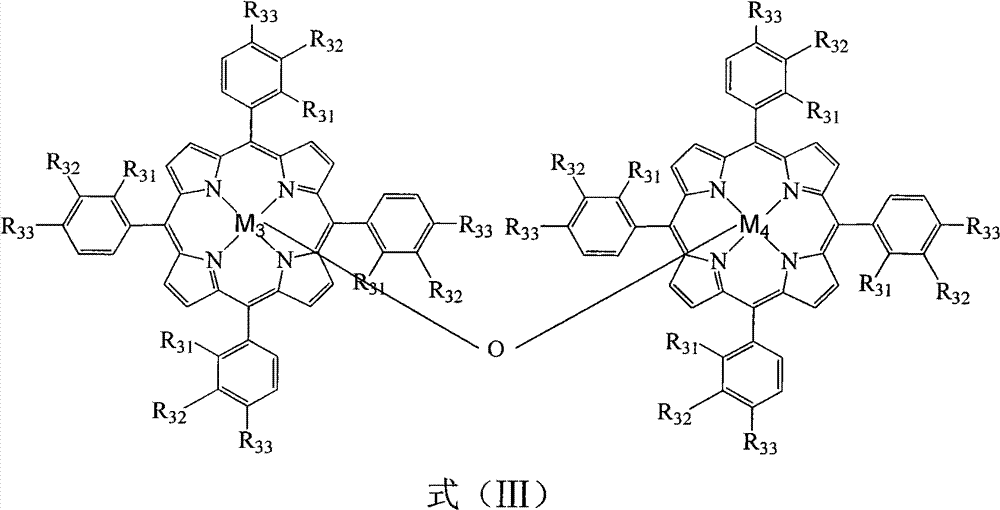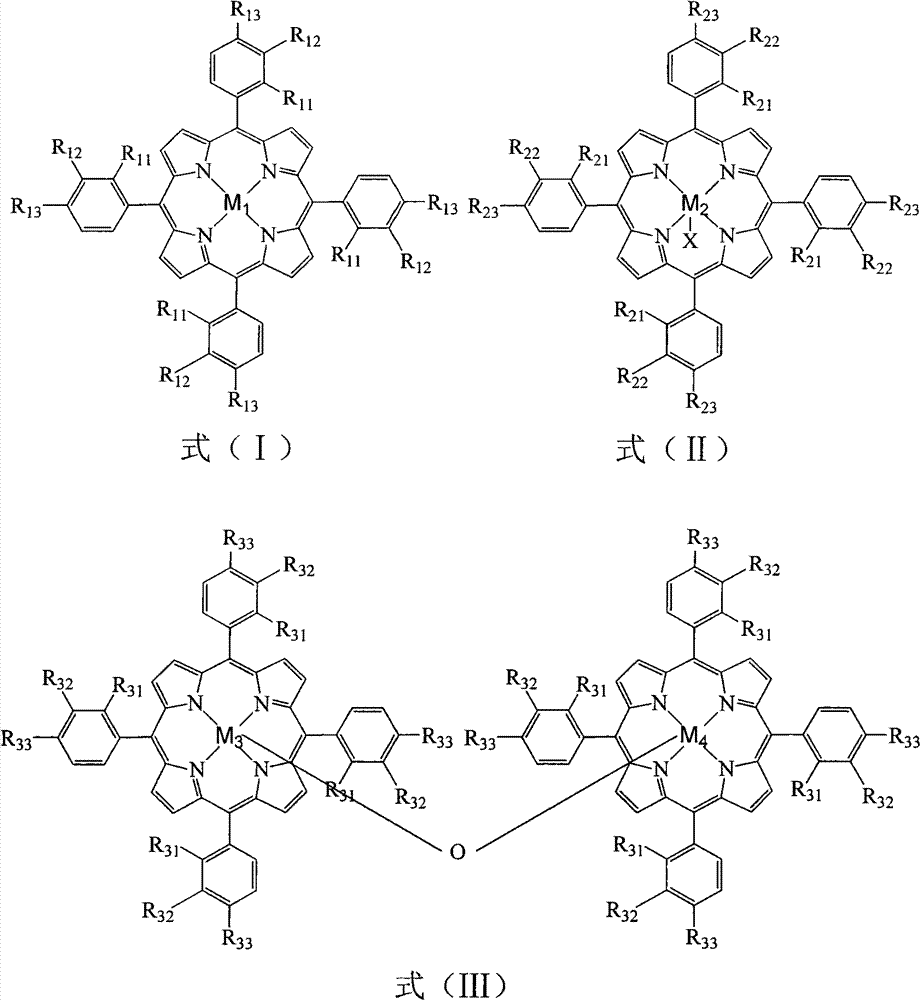Method for preparing propiophenone by biomimetic catalytic oxidation of n-propylbenzene with oxygen
A technology of oxygen oxidation and biomimetic catalysis, which is applied in the preparation of carbon-based compounds, chemical instruments and methods, and the preparation of organic compounds, can solve the problems of increasing operating costs and production costs, equipment investment and operating costs, and cost increases. Achieve the effects of increasing contact probability and reaction efficiency, reducing energy consumption and operating costs, and reducing energy consumption and costs
- Summary
- Abstract
- Description
- Claims
- Application Information
AI Technical Summary
Problems solved by technology
Method used
Image
Examples
Embodiment 1
[0031] In a 100mL three-necked flask, add 12.172g n-propylbenzene, 1ppm (0.07mg) tetraphenyliron porphyrin (i.e. R in formula (I) 11 for H, R 12 for H, R 13 for H, M 1 Fe), 10ppm (0.86mg) four-(p-chlorophenyl) cobalt porphyrin (that is, R in the formula (I) 11 for H, R 12 for H, R 13 for Cl, M 1 For Co), oxygen was introduced at a flow rate of 40 mL / min, the reaction was initiated at 140°C, and the reaction was carried out at 90°C for 6h. The reacted mixture was distilled under reduced pressure to obtain propiophenone, the conversion rate of n-propylbenzene was 79.6%, the yield of propiophenone was 70.4%, and the purity was 99.1%.
Embodiment 2
[0033] In a 100mL three-necked flask, add 12.156g n-propylbenzene, 5ppm (0.38mg) tetra-phenylmanganese porphyrin chloride (i.e. R in formula (II) 21 for H, R 22 for H, R 23 for H, M 2 is Mn, X is Cl), 5ppm (0.44mg) tetrakis-(o-methoxyphenyl) cobalt porphyrin chloride (that is, R in the formula (II) 21 for OCH 3 , R 22 for H, R 23 for H, M 2 is Co, X is Cl), oxygen was introduced at a flow rate of 40 mL / min, the reaction was initiated at 140°C, and the reaction was carried out at 90°C for 7h. The reacted mixture was distilled under reduced pressure to obtain propiophenone, the conversion rate of n-propylbenzene was 81.4%, the yield of propiophenone was 71.6%, and the purity was 99.8%.
Embodiment 3
[0035] In a 100mL three-necked flask, add 12.132g n-propylbenzene, 1ppm (0.15mg) μ-oxygen-binuclear tetra-phenyliron porphyrin (i.e. R in formula (III) 31 for H, R 32 for H, R 33 for H, M 3 , M 4 Fe), 5ppm (0.88mg) μ-oxygen-binuclear four-(p-chlorophenyl) cobalt porphyrin (that is, R in formula (III) 31 for H, R 32 for H, R 33 for Cl, M 3 , M 4 For Co), oxygen was introduced at a flow rate of 50 mL / min, the reaction was initiated at 140°C, and the reaction was carried out at 80°C for 7h. The reacted mixture was distilled under reduced pressure to obtain propiophenone, the conversion rate of n-propylbenzene was 68.3%, the yield of propiophenone was 61.4%, and the purity was 99.6%.
PUM
 Login to View More
Login to View More Abstract
Description
Claims
Application Information
 Login to View More
Login to View More - R&D
- Intellectual Property
- Life Sciences
- Materials
- Tech Scout
- Unparalleled Data Quality
- Higher Quality Content
- 60% Fewer Hallucinations
Browse by: Latest US Patents, China's latest patents, Technical Efficacy Thesaurus, Application Domain, Technology Topic, Popular Technical Reports.
© 2025 PatSnap. All rights reserved.Legal|Privacy policy|Modern Slavery Act Transparency Statement|Sitemap|About US| Contact US: help@patsnap.com



